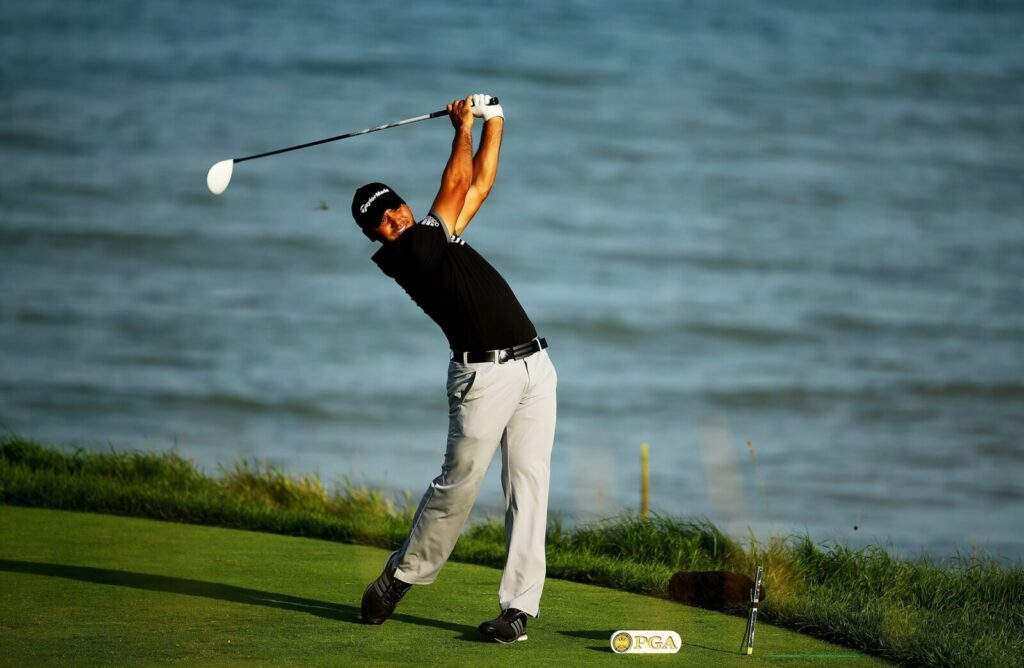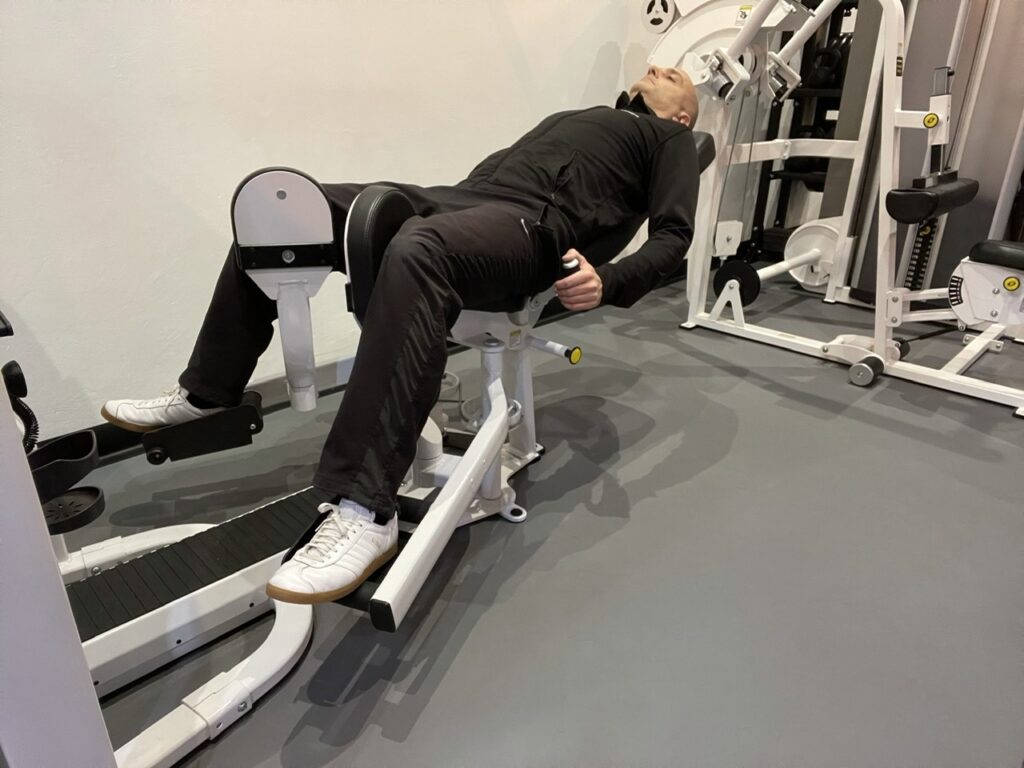In this post we discuss lead hip pain in golf and why stretching doesn’t offer a long-term solution.

At a glance
Your lead hip must rotate quickly from external to internal rotation under load during the golf swing.
Stretching or foam rolling may temporarily improve motion, but doesn’t improve force control. In fact, it might actually have the opposite effect.
Most practitioners focus on releasing tension (e.g. static stretching or foam rolling), but this doesn’t improve the performance of the hip rotators.
Instead, target your hip rotators with strengthening exercises.
Stretching isn’t enough to fix lead hip pain in golfers. Strengthening the appropriate hip muscles is a more effective solution.
Introduction
If pain in your lead hip is hampering your golf, and you’ve tried stretching, massage, and foam rolling without success, this post may help.
Why your lead hip hurts when you play golf
Let’s see if you can figure what the problem is with standard treatment approaches to this issue.
Your lead hip must go from an externally rotated position at the top of your back swing, to an internally rotated position at follow through.
That’s from one end of its range of motion to the other—at high speed—while also managing a portion of your body weight.
What do you think would best set you up for this challenge?
a) an approach that improved your ability to tolerate those forces?
b) one that made that less likely?
I’m guessing you went with a). Good.
OK next.
If a car won’t drive, do you first check the stuff involved with the gas, or the parts associated with the brakes?
I’m no mechanic, but if a car won’t move, I don’t think the handbrake is the first thing that gets checked.
So we’ve agreed that increasing your ability to tolerate the forces involved in the swing is the way to go for your hip.
And that if something doesn’t move very well, it’s best to look at the stuff that moves it,
Now let’s compare this to what you’ve probably tried to solve your lead hip pain.
Why many approaches to lead hip pain in golfers fail
Studies show that golfers typically use more of their lead hip motion than they have available.
So the thought that improving this motion might help is a valid one. This is certainly my experience.
But how do most practitioners go about this?
Stretching
Massage
Foam rolling
What do these methods achieve?
Whilst they might lead to temporary improvements in motion, they do this by reducing the ability of muscles to contract.
This may actually result in less control of your hip during the golf swing.
We’ve already decided that (checks notes) improving your lead hip’s ability to tolerate the forces involved in the swing is the way to go.
So that’s a problem
Secondly, the focus on releasing the brakes does not improve the gas. In this case the internal rotators of the hip.
A more effective approach is to improve the performance of those internal hip rotators directly.
How do you improve internal rotation of the lead hip for golf?
The first step is understanding muscle function.
Which muscles are involved in producing internal hip rotation in the golf swing?
These broadly fit into two categories:
a) Some of the hip abductor group, the anterior fibres of gluteus medius, gluteus minimus and tensor fascia latae (TFL).
b) Most of the hip adductor group.
It’s the second group that we’ll focus on first as they’re usually neglected.
Hip adductor strengthening exercise for golf
The hip adductors form the bulk of the tissue that sits on the inside of your thighs.
Beyond performing isometrics in positions that relate to the golf swing, the best way to strengthen them is using a hip adduction machine (pictured below). These are available in most good gyms.

Hip abductor strengthening exercise for golf
It’s possible to strengthen the hip abductors without equipment. The exercise below is very effective. Once you can complete more than 15 repetitions with control however, switch to the machine version in the gym to make further progress.
Summary
Lead hip pain in golf is common with over 19% of professional golfers reporting issues.
Whilst stretching may increase range of motion, it does nothing to improve control of the forces which occur during the swing.
Use the exercises above to strengthen both the hip adductors and the hip abductors. This offers a more effective way to reduce pain and improve your performance on the golf course.